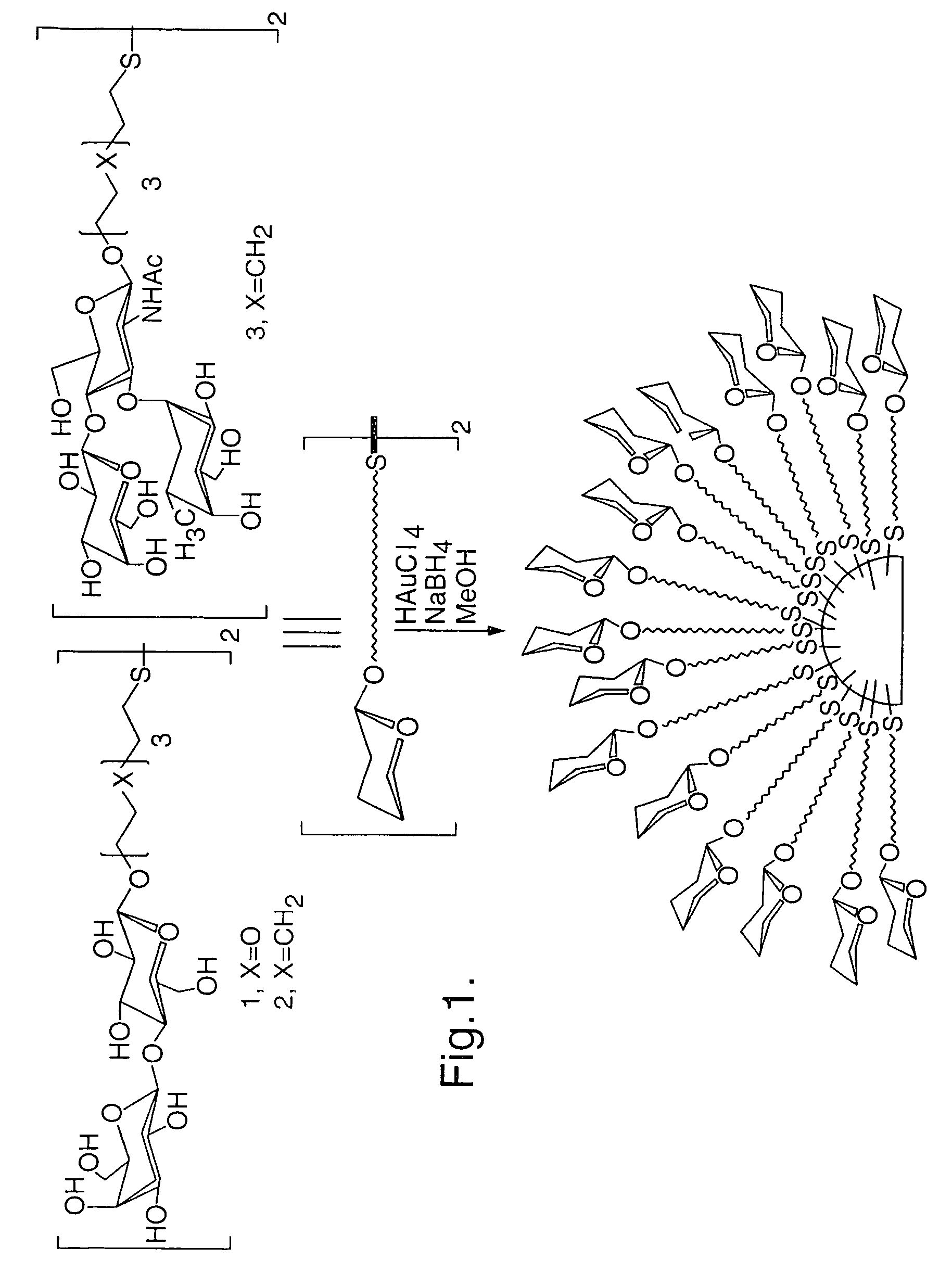Nanoparticles
a technology of nanoparticles and nanoparticles, applied in the field of nanoparticles, can solve the problems of insufficient tools for doing the job, weak and polyvalent carbohydrate mediated interactions, and difficulty in studying carbohydrates and their interactions
- Summary
- Abstract
- Description
- Claims
- Application Information
AI Technical Summary
Benefits of technology
Problems solved by technology
Method used
Image
Examples
Embodiment Construction
Pharmaceutical Compositions
[0053]The nanoparticles described herein or their derivatives can be formulated in pharmaceutical compositions, and administered to patients in a variety of forms, in particular to treat conditions ameliorated by the administration of the ligand. By way of example, this may occur as the ligand blocks a carbohydrate mediated interaction that would otherwise tend to lead to a pathology. Thus, the nanoparticles may be used as medicament for modulating leukocyte-endothelial cell adhesion, carbohydrate-antibody interactions, carbohydrate-protein bacterial and viral infection, immunological recognition of tumour cells, the inhibition of metastatis and foreign tissue and cell recognition.
[0054]Pharmaceutical compositions for oral administration may be in tablet, capsule, powder or liquid form. A tablet may include a solid carrier such as gelatin or an adjuvant or an inert diluent. Liquid pharmaceutical compositions generally include a liquid carrier such as water...
PUM
| Property | Measurement | Unit |
|---|---|---|
| diameter | aaaaa | aaaaa |
| diameter | aaaaa | aaaaa |
| diameter | aaaaa | aaaaa |
Abstract
Description
Claims
Application Information
 Login to View More
Login to View More - R&D
- Intellectual Property
- Life Sciences
- Materials
- Tech Scout
- Unparalleled Data Quality
- Higher Quality Content
- 60% Fewer Hallucinations
Browse by: Latest US Patents, China's latest patents, Technical Efficacy Thesaurus, Application Domain, Technology Topic, Popular Technical Reports.
© 2025 PatSnap. All rights reserved.Legal|Privacy policy|Modern Slavery Act Transparency Statement|Sitemap|About US| Contact US: help@patsnap.com



